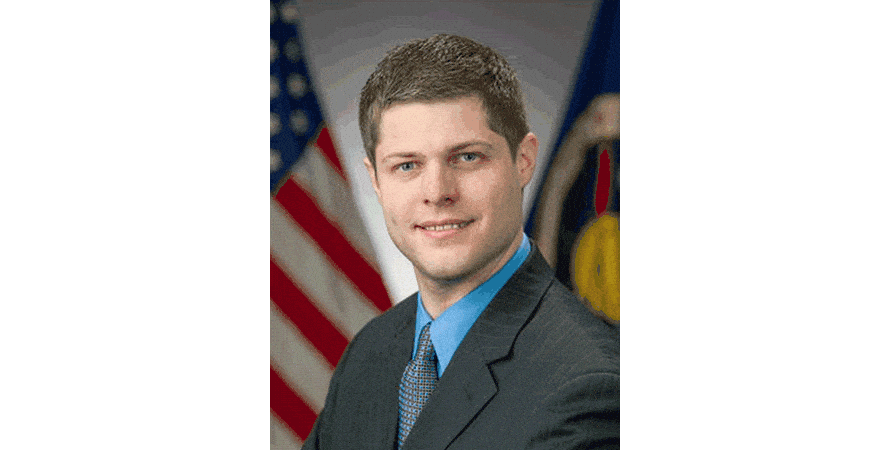By Robin Scott
Image: Brandon Lloyd, part of NASA’s flight director class of 2021 (courtesy NASA).
On April 11, 2021, on the eve of two important space anniversaries, NSS of North Texas President Ken Ruffin opened their meeting with a timely presentation on the “60th and 40th Anniversaries of Crewed Spaceflight” including the launch of the first person into space, Yuri Gagarin, on Vostok 1 and the first space shuttle launch of STS 1 Columbia. Ruffin artfully detailed more space history including aspects of the space race with the launch of Sputnik 1 by the U.S.S.R. on October 4, 1957, and then the launch of the Jupiter-C rocket by the U.S. on Jan 31, 1958.
NASA VIP Flight Director of Johnson Space Center Brandon Lloyd then transported meeting attendees to new levels of understanding when he presented “EXPLORE: HUMANS in SPACE.” Starting with a slide of a view from his office in the Christopher C. Kraft Jr. Mission Control Center in Houston, Lloyd mentioned that around the world there are many other mission control centers for the International Space Station (ISS): Huntsville, Alabama; Montreal, Canada; Moscow, Russia; Oberpfaffenhofen, Germany; Toulouse, France; and Tsukuba, Japan.
The purpose of mission control is for the ISS, which “is the most complicated spacecraft ever created…. It’s been under assembly and change…over the last 20 years of continuous human presence.” The numerous companies, nuances, systems, and vendors of the ISS create complexities such that no astronaut can know all of the details. This makes it is well worth the investment in hundreds of people around the world to ensure efficient use of taxpayer dollars for crew time. Lloyd explained that safety of flight operations of the systems for the ISS is led by mission control in Houston, Texas, and payloads operation control for all of the science that goes onboard takes place at Marshall Space Flight Center in Huntsville, Alabama.
Lloyd’s job as flight director is to lead the mission flight control team and mission control centers around the world “to operate the space craft; to plan the next days and months of missions and operations; to oversee the development of the rules, procedures, and all the timelines”; and to train the teams for spacecraft events. Unexpected noteworthy system behavior is documented in an anomaly report system. He emphasized that systems should be learned in low Earth orbit “to break them in early” so that these systems will be more reliable and robust when missions go further into space.
He elaborated on a space walk being a full day’s work: several hours of tasks in the airlock to prevent decompression sickness and to get their suits ready, and then the physically and mentally exhausting space walk itself which takes 6.5 hours. Lloyd also spoke on physical challenges that space makes on the astronauts: elongation of the spine, bone density loss, and loss of height due to spinal bone decay. On the ISS, the treadmill called the COLBERT and the exercise machine called ARED are found to be an effective countermeasure to prevent significant bone loss.
Lloyd went on to mention that there are an increasing amount of visiting space vehicles docking to the ISS. There is a 50 foot, 1,000 pound robotic arm with manipulators that can caterpillar itself along the truss or modules of the ISS and reach out to spacecraft which are within 10 meters of the ISS. “Then astronauts literally drive (with hand controllers and video views) the arm to go get a free floating vehicle that weighs 20,000 pounds or so.” From there the robotics officer brings it in and bolts it down to the birthing port and then “gets into the goodies.”
Lloyd described that one goal of the ISS was to help commercialize low Earth orbit with “the more the government can take the risks and spend our budget on the things that companies can’t get, risks that don’t have a profit model yet.” He listed the commercial crew program as an example.
Lloyd looked to the future Gateway mission and the goals of the Artemis program with the building of an infrastructure and testing of technologies to go on to the next step to Mars. He showed explanatory illustrations of the Artemis I, Gateway, and Orion missions and compared the hours, temperatures, miles per hour, and number of miles for LEO, lunar, and Mars returns side-by-side. At the presentation’s end, Lloyd answered an ample amount of the audience’s questions.



















